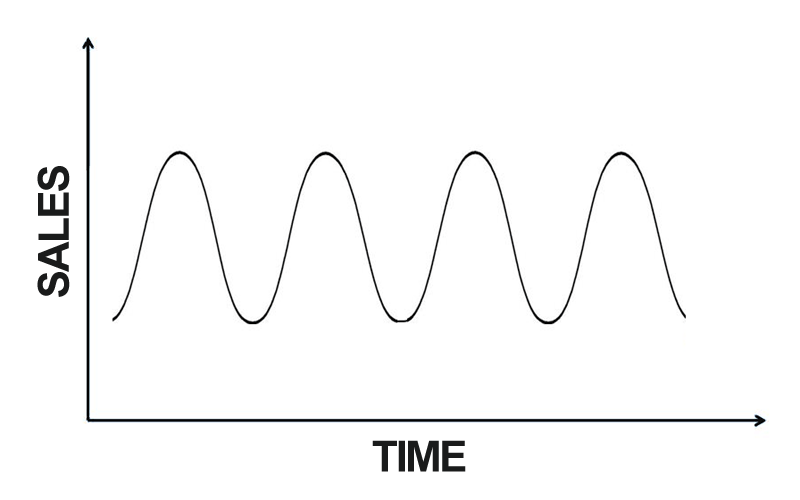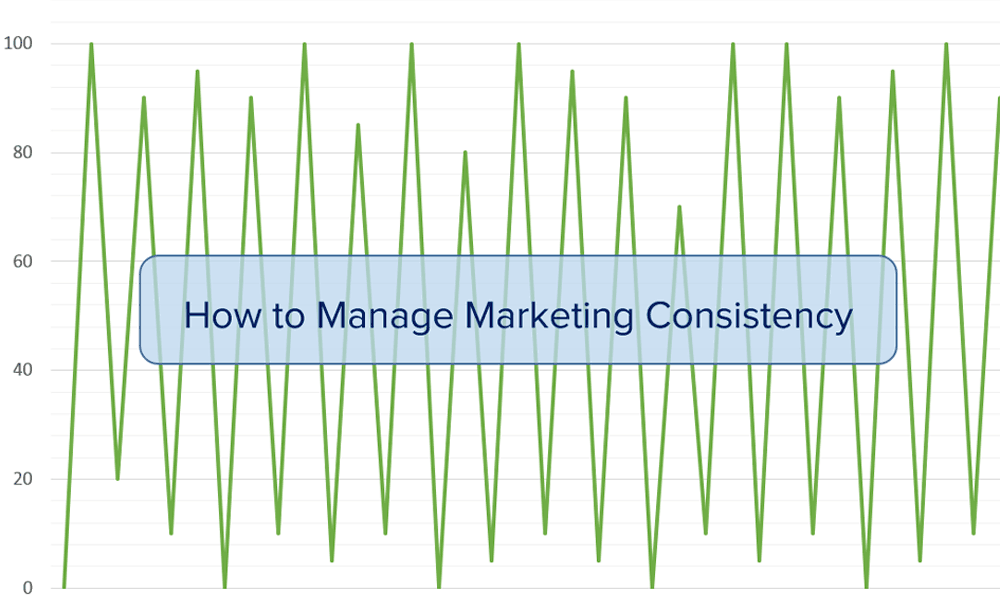Ah, the perils of not having marketing consistency…
When building our first website development and hosting company, my partner and I had a simple division of labor: I created the public-facing elements, and he built the hidden bits. Before long, we were busier than we ever imagined. And each time we landed a project, we’d dive in, spending a month or two building exclusively to suit the client’s requirements. The problem was that when we finished something, we’d wonder where our next project was coming from.

Our business became a rollercoaster of sell, then build, sell, then build. It was uncomfortable – we’d be in complete flow for a while, then we’d freak out about the pipeline. Cashflow problems always stress a business.
Eventually, our reputation grew enough to take larger projects. We could finally afford to hire someone to build front ends. That freed me up to focus on marketing and sales. Over time, I built a plan to keep the project pipeline moving. Here are some ideas to help you drive marketing consistency.
Starting
You may have expected PLANNING first, but sometimes you need to start before you can plan. Call it FIRE | READY | AIM. It’s counterintuitive, but planning slows down what you have to do – figure out what people respond to. I’m talking about simple, inexpensive marketing tests. Use your instincts to see if they’re right.
Planning
Based on early feedback from STARTING, you can create more structured plans. You have many marketing channels to consider (read Traction for a great foundation). Test the ones you think will get your business moving (email marketing if you have a list, Facebook if your audience is there, Google Adwords or Bing Ads if it suits your market).
Reviewing
Measure! Whatever you do, make sure you’re checking responses. If you’re building website traffic, adding newsletter subscribers, running ads, whatever, make sure you’re tracking the results. I’ve seen companies that run ad campaigns and spend money for YEARS without measuring conversions. You cannot set it and forget it. Review every day, week or month – whatever is appropriate for your budget and goals.
Learning
REVIEWING means to focus on LEARNING. You have to interpret, not just collect, the results. What’s working? What isn’t? Red buttons get more clicks than blue buttons, long copy converts more users than short copy, having the registration form at the top works better than the form at the bottom… Keep abreast of trends in the marketplace and incorporate new ideas in your plans. Try things using split testing, such as Optimizely.
Adapting
From LEARNING, you can adapt. Red buttons work? Use more red buttons in your split testing. The form at the bottom never gets filled out? Don’t put them there. Growth hacking is about doing more of what works and less of what fails.
Maintaining Marketing Consistency…
The MOST IMPORTANT IDEA here: keep going. Avoid the peaks & valleys of business by always marketing. I have seen it my entire career: the first budget cut is marketing when business slows down. Don’t do it. I also had a client recently express that their company was “too busy” for any marketing work at the moment (here comes a valley!).
Always. Be. Marketing.
It pays off. It reduces long-term stress and surprisingly works BETTER when you market into doldrums. Here’s a great example. In 1991, our company’s sales were slow. After 9/11, everything went to an absolute standstill. Our sales person continued to market and sell through the lull, enduring countless rejections. When things picked up, though, they did so in a big way. Everyone we contacted had us top-of-mind. They even started calling us before we called them!
Marketing is so different compared to even five years ago. We have more tools, more noise, more competition, more distractions, and less time. But we must be marketing, and we need to do so with a smart approach. If you’re holding back, start soon. And then? Always. Be. Marketing.





![Video Engagement [Infographic]](https://twistedpuppy.com/wp-content/uploads/2017/08/twisted-puppy-blog-video-engagement-1-500x383.png)


[…] marketing is a fickle beast – and you have to do it all the time. Like many of you, at the end of the year, we take time to reflect on our performance with tasks […]
[…] once said Always. Be. Marketing. Now there’s a corollary. Always. Be. […]
[…] reason, the first budget cut when times are lean is marketing. We continue to believe you should Always. Be. Marketing. And we have even taken that a step further for sales, and say Always. Be. […]